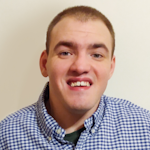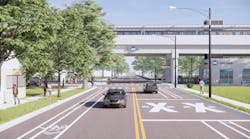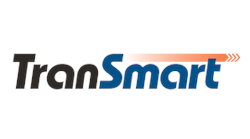One word to describe yourself: Eclectic
Alma Mater: University of Florida
Fast fact about yourself: I was at Game 7 of the 1997 World Series when the then-Florida Marlins (now Miami Marlins) won their first World Series.
What’s your best experience on transit and what made it memorable? When I visited Seattle, Wash., a few years back, we needed to get across town and decided to take a bus to that destination. When the bus arrived, to my surprise, it was a Sound Transit double-decker express bus used predominantly for regional travel. I was caught off guard and excited about riding a double-decker transit bus. We hopped on the bus and went immediately to the upper level. We had a front-row seat as we traveled to our destination. Even though it is a regional bus, it has a few stops in Seattle and we were able to take it to our destination.
Shane Misztal began his career working as an engineer down in his home state of Florida. In 2016, he moved to Chicago, Ill., with hopes of an opportunity to work on some local public transportation projects as an engineer. He sold his personal vehicle prior to his move to Chicago to embrace the public transit mobility options that Chicago has to offer. Misztal is a transportation engineer/project manager for the local consulting firm TranSmart in Chicago and as a Transportation Engineer, his goal is to alleviate traffic and congestion on the roadway.
Misztal has been fortunate enough to work on local projects that shape the community around him. A major transit project Misztal worked on is the high-profile Red Line Extension (RLE) project that will transform the southside of Chicago. The project consists of a 5.6-mile extension of the Chicago Transit Authority (CTA) Red Line and will include the construction of four new stations. The project is the first extension of any of Chicago’s rail lines in more than 30 years.
He served as the transportation lead for the project and was responsible for putting together the transportation chapter of the Final Environmental Impact Statement, which consisted of the evaluation of existing operations for all modes of transportation (pedestrian, bicycle, transit, vehicle, commuter rail, freight and parking), as well as the impact on these modes following the construction of the RLE. The project will provide equity for historically underserved communities, provide economic opportunity for faster and more reliable access to economic regions of Chicago and provide a sustainable mode of transportation that will not only benefit the residents accessing it, but the environment as well.
In August 2022, the Final Environmental Impact Statement and Record of Decision was published by the Federal Transit Administration (FTA) and as of September 2023, the FTA has pledged $1.98 billion in funding for the project.
Another transit project he worked on is the implementation of the transit signal priority (TSP) project for the north Ashland CTA Bus Line, one of Chicago’s most vital bus lines. Misztal was responsible for the synchronization of intersection offsets by modeling current and future traffic conditions, which would determine the duration of TSP needed at each intersection. Providing TSP would bring forth the bus line's ability to travel down the Ashland corridor with minimal delays, thus allowing the buses to stay on schedule and preserve reliability for the Ashland bus service. TSP has been approved for 37 intersections along the Ashland corridor.
In addition, Misztal is working on a comprehensive city-wide project for the city of Chicago that involves traffic signal modernization for its roadway network. A major aspect of the traffic signal modernization is the inclusion of previously absent accessible pedestrian signals (APS). The APS signals communicate information about pedestrian signal timing in non-visual formats for some of the most vulnerable population. Misztal is responsible for the design and placement of these signals at intersections throughout Chicago.
Misztal has also volunteered his time for the professional group Young Professionals in Transportation (YPT), an organization focused on professional development, fellowship and networking for new professionals in the transportation field. He has served on the board of the Chicago Chapter of YPT for three years, including chair for one year, and has served on the YPT International board as deputy chair for two years. In addition, he served on the planning committee for the inaugural Transportation Camp Chicago and the chair for the planning committee the following year.
He is also very active in advocating for transit in his everyday personal life. As a local citizen, he serves on the transportation task force for the North DuSable Lake Shore Drive Project, which looks at multiple redesign options for the major north-south roadway along the lakefront of Chicago. This is a rare opportunity to transform lane usage on an iconic Chicago roadway that puts public transit first by converting a general travel lane to a bus-only lane and is one of several design options but one of the few that prioritizes transit users and Miszal is using his task force position to advocate for this design option, which prioritizes transit over automobile traffic. Currently, this project is still in the alternative selection phase.
Is there a specific experience that led you to where you are today?
South Florida's urban landscape is like most United States metropolitan areas. It has a large population, is sprawled out and lacks public transportation connectivity, making driving the only viable mode of transportation. Growing up sitting/driving in traffic congestion and continually seeing it worsen over time created a personal aversion to driving. This aversion was so strong that I became desirous of finding solutions to reduce traffic congestion, leading me to become a Traffic Engineer and ultimately to Chicago.
What do you enjoy most about your job?
What I enjoy most about my job is working on projects in my backyard, figuratively speaking. In the transportation engineering world, there are many instances where you work on projects in neighboring areas, other parts of the state, different parts of the country or another country. It can be difficult at times to work predominantly on local projects if you work outside a large city because the amount of work is not there.
Now I have the pleasure of working on projects that involve intersections and streets that I travel along on foot, bike or transit. I get to make actual changes to facilities that I use daily and even better, I get to see that change happen before my eyes. It's incredibly satisfying and for the past five years of my career, I have been fortunate enough to work on projects that take place on the streets where I live.
What’s the most challenging part of your job?
The most challenging part of my job is adjusting the ingrained mindset of the general population that the only way to reduce congestion is to add more travel lanes. Historically, traffic engineers were taught that congestion will be reduced by increasing capacity (adding lanes). Still, because of induced demand, it's been proven repeatedly that this is not an effective method in most cases. Providing other viable transportation modes that decrease the number of vehicles on the roadway is the most effective approach to reducing congestion. Of course, to achieve this goal, a collaborative effort is needed between engineers, planners, local legislators and the public.
Accomplishment you’re most proud of and why?
The accomplishment I am most proud of is my work with the CTA RLE. The project consists of a 5.6-mile extension of the CTA Red Line and will include the construction of four new stations. It would be the first extension of any of Chicago's rail lines in more than 30 years! The project will provide equity for historically underserved communities, provide economic opportunity for faster and more reliable access to economic regions of Chicago and provide a sustainable mode of transportation that will benefit not only the residents accessing it, but the environment as well. I served as the transportation lead for the project and was responsible for putting together the transportation chapter of the Final Environmental Impact Statement. This role consisted of evaluating existing operations for all modes of transportation (pedestrian, bicycle, transit, vehicle, commuter rail, freight and parking) and the impact on these modes following the construction of the RLE.
In August 2022, the federal government published the Final Environmental Impact Statement and Record of Decision and as of September 2023, the federal government has pledged $1.98 billion in funding for this project. It was a comprehensive project that required team effort and coordination between all disciplines and my slice of work was just a portion of the final product. I worked with some fantastic and supportive people on this project and I'm fortunate to have had the opportunity to work on something transformational for the city of Chicago.
What is an accomplishment you would like to work towards in your career?
An accomplishment I would like to work towards in my career would be to be a commissioner for a city's Department of Transportation or the lead city traffic engineer for a town, where I get to use my experience and knowledge to help transform the transportation landscape into a more sustainable one by being a decision maker. There will be a greater emphasis on transit and active transport by incorporating smarter land use, reducing sprawl and promoting density to reduce the reliance on personal vehicles.
Best advice/tip/best practice to share from your area of expertise?
Don't be afraid to seek out what you want and speak up about work that interests you. Professionally speaking, you may have to go after the type of career you want, as somebody won't lay it out perfectly for you. Civil engineering is extensive and early on in your career, you are qualified enough to begin a career in most civil engineering disciplines.
It's easy to take the first opportunity presented to you because that is the most significant need for the job market or your employer. Starting my career, I worked on various projects that did not deal with transportation because of the current need. While helping on these other projects, I voiced to my superiors that I wanted to work more with traffic planning, traffic operations and active transportation.
I realized that my current location wasn't the most suitable for me to get the opportunity to work on the types of projects I desired so I bided my time and did what was necessary and moved to Chicago, where I was fortunate that I got that opportunity. I continued to forge my path by attending specific trainings and getting certifications focused on my interests. You could look at my name and certifications without speaking to me and know the type of work I do. Now, there is no question what my expertise is and the kind of work I am most suitable for.

Brandon Lewis | Associate Editor
Brandon Lewis is a recent graduate of Kent State University with a bachelor’s degree in journalism. Lewis is a former freelance editorial assistant at Vehicle Service Pros in Endeavor Business Media’s Vehicle Repair Group. Lewis brings his knowledge of web managing, copyediting and SEO practices to Mass Transit Magazine as an associate editor. He is also a co-host of the Infrastructure Technology Podcast.







